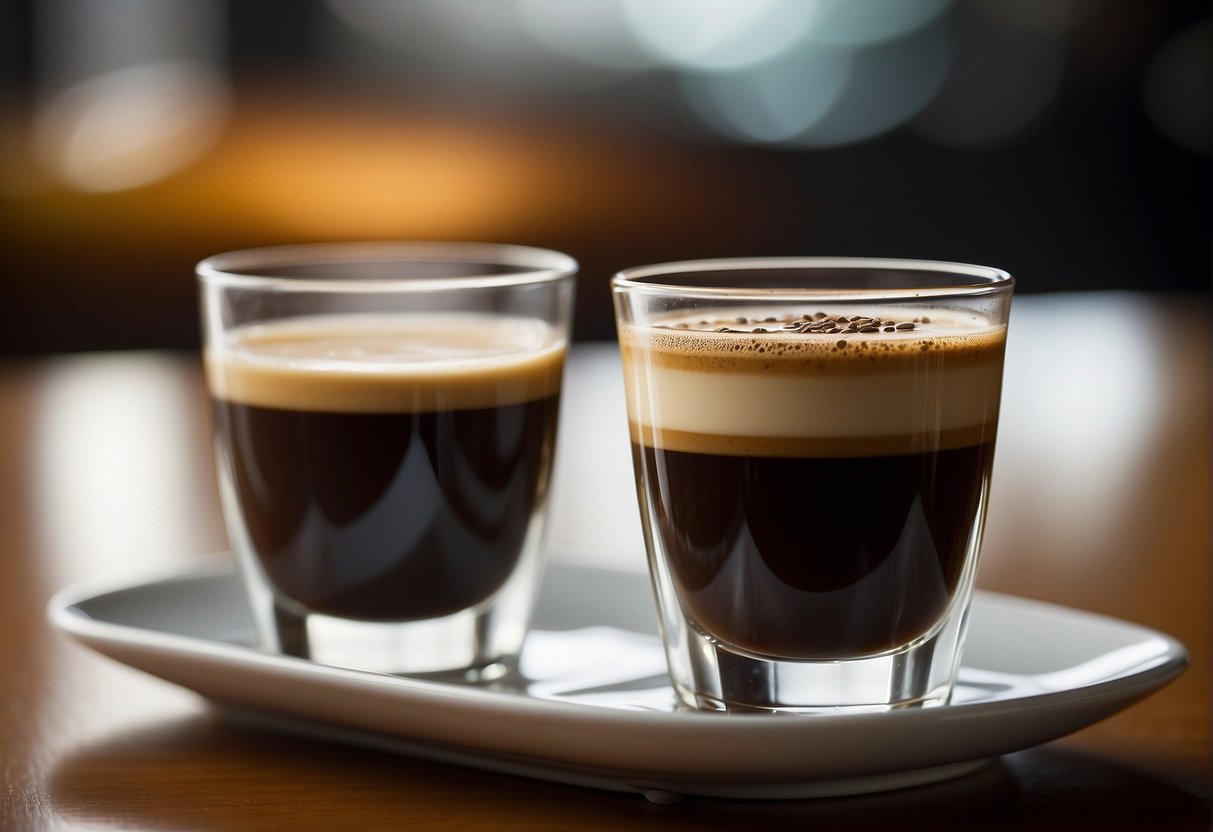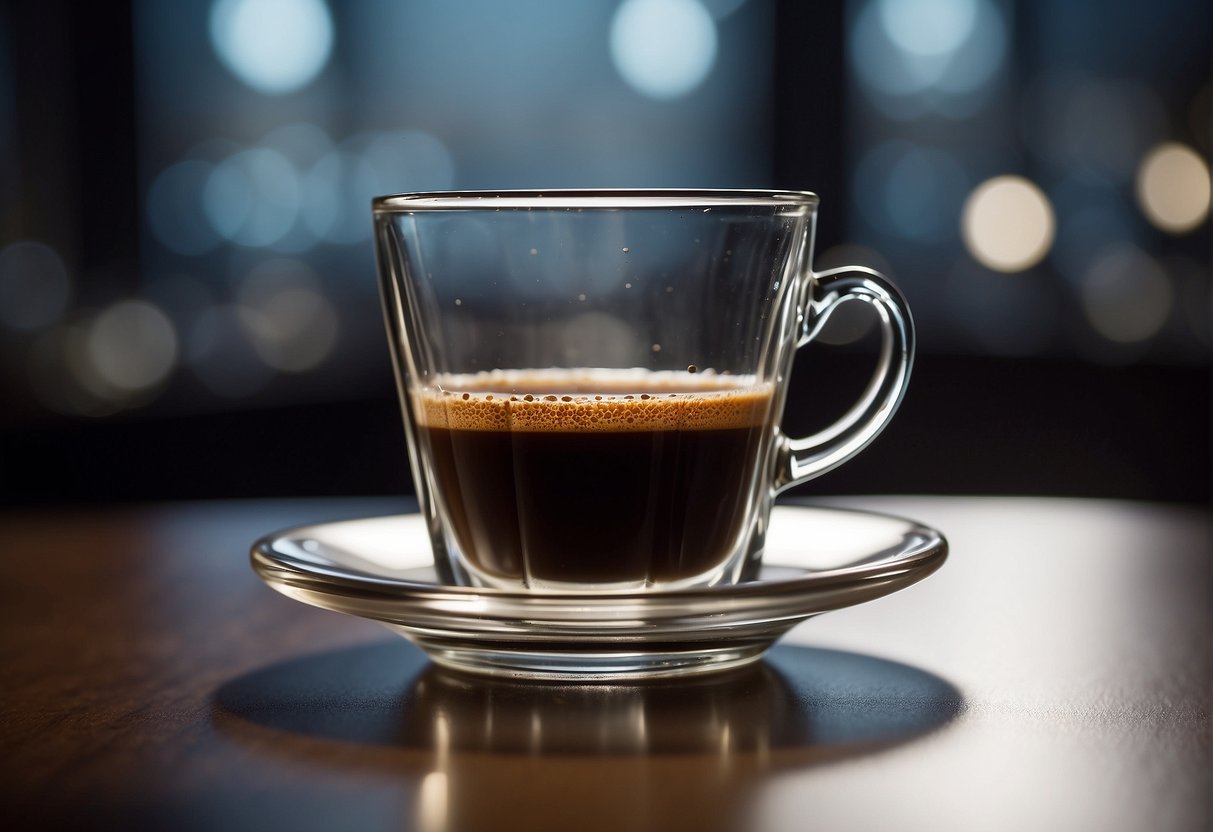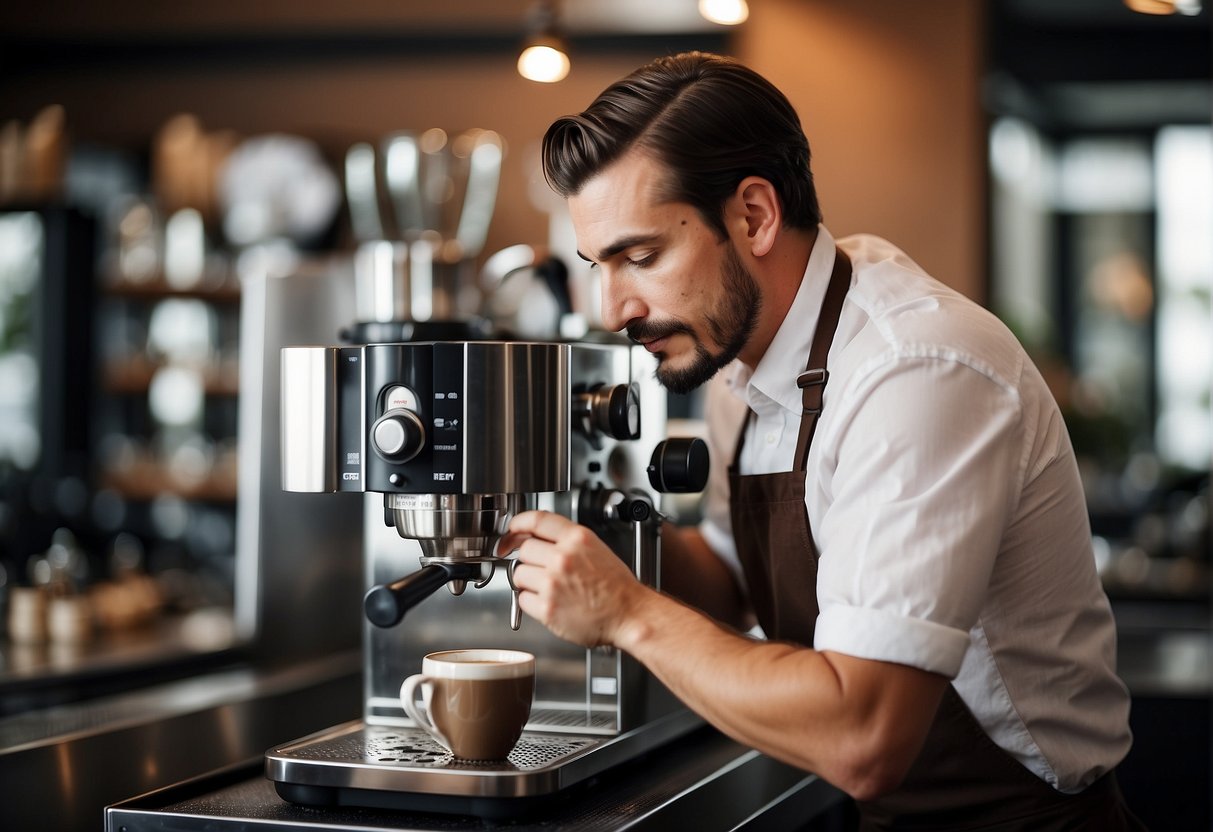When brewing espresso, extraction is the process that makes all the difference in flavor and balance. The term ‘extraction’ refers to the method of hot water passing through ground coffee, drawing out the flavors, oils, and solids from the beans. The perfect espresso is a careful balance, where the water has extracted just enough from the coffee grounds. However, striking this balance can be tricky, and it’s easy to end up with an over-extracted or under-extracted shot.

An over-extracted espresso can taste bitter and harsh. This occurs when water contacts the coffee grounds for too long or the grind is too fine, leading to the extraction of undesirable compounds. On the other hand, an under-extracted espresso may taste sour or weak, as not enough time was allowed for the water to extract the full spectrum of flavors. The grind could also be too coarse, causing the water to flow through too quickly, which doesn’t give it enough time to absorb the flavors.
Understanding the signs of over and under-extraction is crucial for perfecting your espresso technique. Paying attention to the taste, the flow rate of your espresso, and the appearance of the shot as it comes out of the machine can help you adjust your methods. By finetuning variables such as grind size, brew time, and water temperature, you can ensure a well-extracted shot that delivers a rich and satisfying experience in each sip.
Basics of Espresso Extraction
In espresso extraction, your goal is to obtain the best balance of flavors by controlling several variables that affect the brew. The key to mastering this lies in understanding the process and tweakable elements.
Understanding Extraction and Its Importance
When you brew espresso, you are essentially extracting flavors and compounds from coffee grounds using hot water. Extraction is the process of dissolving soluble compounds from the coffee grounds, and it’s crucial because it determines the strength and taste of your espresso. A good extraction pulls out the desirable flavors and leaves behind the less pleasant ones.
- Ideal Extraction: Aims to achieve a balance between under-extracted (sour, weak) and over-extracted (bitter, harsh) flavors.
- Extraction Yield: Refers to the percentage of coffee grounds mass that ends up dissolved in the water. Optimal yield usually ranges between 18-22%.
Roles of Grind Size and Water Temperature
Grind Size
Your grind size directly influences the extraction:
- Fine Grind: Increases the surface area in contact with water, leading to a quicker and more intense extraction.
- Coarse Grind: Reduces the surface area and slows down extraction, typically leading to a lighter brew.
Adjusting the grind size is one of the most effective ways to control extraction rates during your coffee brewing process.
Water Temperature
The temperature of the water can make or break your espresso:
- Hotter Water (~200°F): Extracts compounds more efficiently, offering a fuller extraction in less time.
- Cooler Water: Slows down the extraction process, which can be useful if your espresso is extracting too quickly.
Remember, water that is too hot might over-extract unwanted bitter compounds, whereas water that’s not hot enough could lead to under-extraction, leaving you with a sour espresso.
Identifying Under-Extraction
When you brew espresso, achieving the right level of extraction is crucial for the best flavor. Under-extraction can lead to a less than satisfying cup that may taste sour or lack complexity.
Characteristics of Under-Extracted Espresso
Your under-extracted espresso will often display a sour taste, which is a primary indicator that the coffee has not been extracted enough. This acidity can overshadow any other flavor notes in the coffee.
Visual Cues:
- Pale crema
- Watery appearance
Taste & Aroma Profile:
- Sour and acidic flavor
- Lack of sweetness and complexity
- Astringency, leading to a dry mouthfeel
Common Causes of Under-Extraction
Grind Size:
- Too coarse: Water passes through the coffee too quickly, limiting extraction.
Brew Time:
- Too short: There hasn’t been enough contact time between the water and coffee.
Temperature:
- Too low: Insufficient heat may not extract all the flavors.
Dose:
- Too little coffee: A smaller amount of coffee will result in weaker, under-extracted coffee.
Understanding these pointers helps you pinpoint issues in your brewing process and guides you toward making a more balanced espresso.
Identifying Over-Extraction

When your espresso tastes overly bitter and lacks any sweet or pleasant flavors, it’s likely over-extracted. Understanding over-extraction is crucial to making satisfying espresso.
Characteristics of Over-Extracted Espresso
It’s important to identify when your espresso is over-extracted so you can enjoy a more balanced cup. Here are key indicators that your espresso might be over-extracted:
- Taste: The primary characteristic of over-extracted espresso is a noticeable bitterness that overwhelms other flavors.
- Mouthfeel: The texture may feel too dry or astringent on your tongue.
- Aroma: You may detect a lack of aromatic complexity, with burnt or ashy notes coming to the forefront.
Common Causes of Over-Extraction
Understanding the common causes of over-extraction helps you prevent it in the future. Here’s what could be causing your over-extracted coffee:
- Grind Size: Using a grind that is too fine can lead to over-extraction, as water will pass through the coffee grounds too slowly.
- Brew Time: Excessive brew time means water is in contact with the grounds for too long, drawing out unwanted flavors.
- Water Temperature: If your water is too hot, it can extract bitter compounds more quickly.
- Pressure: In espresso machines, too high pressure can force more of the bitter compounds out of the coffee grounds.
By keeping an eye on these factors, you can adjust your brewing process to achieve the best possible flavor from your espresso.
Achieving the Ideal Balance

Finding the ideal balance in your espresso involves fine-tuning the extraction process to hit the sweet spot where acidity, sweetness, and bitterness harmoniously come together. Perfecting this balance ensures the ideal extraction that highlights the espresso’s best flavors without overemphasizing any single element.
Adjusting Brew Variables
To improve your espresso, you need to adjust several brewing variables:
- Grind Size: A finer grind increases extraction, enhancing sweetness and acidity, while a coarser grind can reduce bitterness from over-extraction.
| Grind Size | Extraction | Taste |
|---------------|--------------|----------------|
| Finer | Higher | Sweeter, Acidic|
| Coarser | Lower | Less Bitter |
- Dosage: Using more coffee (higher dose) can lead to over-extraction, causing bitterness. Less coffee (lower dose) may lead to under-extraction, resulting in a sour taste.
- Water Temperature: Higher temperatures extract more from the coffee, potentially leading to bitterness if too high. Lower temperatures may not extract enough, resulting in a flat taste.
- Extraction Time: Aim for an extraction time around 25-30 seconds. Shorter times can under-extract, while longer times might over-extract.
- Tamping Pressure: Ensure consistent tamping pressure. Uneven tamping can cause channeling, where water passes through the coffee unequally, affecting balance.
Espresso Machine and Grinder Maintenance
Regular maintenance of your espresso machine and grinder is essential:
- Cleaning: Keep your machine and grinder clean to prevent old coffee residue from influencing your espresso’s taste.
- Calibration: Regularly check and calibrate your grinder to ensure a consistent grind size, which is crucial for balanced extraction.
- Water Quality: Use filtered water to protect your machine from scale buildup and to maintain the espresso’s optimal flavor profile.
By focusing on these details and maintaining your equipment, you can consistently craft a balanced and delicious espresso shot.
Advanced Techniques and Considerations

In pursuit of the perfect espresso shot, understanding the intricacies of brew methods and the science behind coffee’s complex taste profile is crucial. Your approach to these facets can make or break the quality of your extraction.
Exploring Different Brew Methods
When you’re venturing beyond traditional espresso machines, various brew methods can influence extraction significantly. Brewing times and water pressure vary across devices, radically altering the result in your cup.
- Espresso Machine: It’s vital to monitor tamping technique and water pressure, aiming for around 9 bars of pressure and a brewing time of 20-30 seconds.
- Aeropress: Offers a lower-pressure environment. You’ll want to grind your coffee slightly coarser than for espresso and keep your brewing time around 1-2 minutes.
- French Press: For a smoother extraction with less bitterness, a coarser grind and a brewing time of about 4 minutes work well.
- V60: Requires a precise pour-over technique and a medium-fine grind, with a total brew time of 2-4 minutes, depending on your desired strength.
Each method requires the correct coffee grinder settings to match the brew method‘s demand and the portafilter‘s characteristics if you’re using an espresso machine.
The Science of Coffee Aromas and Flavours
Your espresso’s flavours and aromas are largely contingent upon the coffee’s oils and soluble compounds being extracted properly. The science behind espresso extraction is a delicate balance; a symphony of chemistry and physics.
- Aromas: Achieving the rich bouquet of scents is tied to extracting volatile aromatic compounds efficiently, meaning careful control over the grind size and brewing times.
- Flavours: Each coffee bean contains hundreds of potential flavor compounds. By manipulating variables like tamping technique and water pressure, you can highlight different notes ranging from sweet to bitter.
Remember, delightful espresso is an interplay of science and art; your sense of exploration and attention to these advanced techniques will refine your palate and enhance your brewing repertoire.
Ensuring Consistency and Quality

Creating a consistently high-quality espresso shot is key, and it hinges on closely monitoring extraction metrics and understanding the impact of water quality. This section will guide you through measuring important extraction factors and the role of water in espresso making.
Measuring Extraction Metrics
1. Extraction Time: Your espresso’s brewing time is critical. Aim for an extraction time of 25 to 30 seconds. This timing helps ensure that your espresso isn’t over or under-extracted, which could result in either a bitter or sour taste, respectively.
2. Pressure: The pressure of the espresso machine should be stable, typically around 9 bars. Consistent pressure ensures that the extraction is even and produces the characteristic crema atop your espresso.
- Extraction Percentage and TDS: Measure your Total Dissolved Solids (TDS) using a refractometer to get a read on the extraction percentage. An ideal extraction percentage is usually between 18% to 22%. This indicates that the optimal amount of water-soluble coffee compounds has been extracted.
- Visual Inspection: Crema is the creamy layer on top of an espresso. It should be present but not excessive. Excessive crema may indicate over-extraction, while insufficient crema often points to under-extraction.
- Use scales to ensure the correct coffee amount.
- Timer: Keep track of the brewing time.
- Consistently check machine pressure.
- Regularly calibrate your TDS meter.
Water Quality and Its Effects
- Hard Water: Hard water can have high levels of calcium and magnesium, which can affect the taste of your espresso and damage your equipment. It’s imperative to regularly descale your machine to prevent buildup and maintain flavor.
- Tap Water: While convenient, tap water can vary in quality. If it’s high in minerals, it could lead to an over-extracted taste. Consider filtering your tap water or using bottled water with a balanced mineral content for more consistent results.
- Temperature and Purity: The water temperature should be just below boiling, around 195°F to 205°F. Use a thermometer to ensure accuracy. Additionally, the purity of water is important, as impurities can alter the coffee’s flavor profile. It’s best to use filtered water to maintain a clean taste in your espresso.
- Regular descaling cycle for machine maintenance.
- Filtered water is preferable for taste and machine longevity.
- Check and adjust your water temperature routinely.
Frequently Asked Questions
In crafting the perfect espresso, understanding extraction is crucial to your coffee’s flavor. This section answers common questions to enhance your espresso experience.
What are the typical flavors of an over-extracted espresso and how can I recognize them?
Over-extracted espresso often tastes bitter and astringent, with a dry, pucker feeling in your mouth. You might notice a lack of sweetness and an abundance of harsh, charred flavors.
How can I adjust my coffee machine settings to prevent under-extraction in espresso?
To prevent under-extraction, ensure your coffee machine is heated to the correct temperature, typically between 195-205 degrees Fahrenheit. Adjust your grind to be finer and tamp the grounds evenly to increase extraction time.
What steps can I take to correct an espresso shot that’s been over-extracted?
If you’ve over-extracted your espresso, try coarsening your coffee grounds, reducing water temperature, or shortening the brew time. These adjustments can help to balance the extraction.
How does under-extraction affect the taste of my espresso compared to over-extraction?
Under-extraction results in a sour, acidic taste with a lack of depth or complexity. In contrast, over-extraction causes bitterness and too much strength. The key lies in finding a balance between the two.
Why might my espresso come out too bitter and how can I fix it?
Your espresso may become too bitter if the water temperature is too high, if it’s extracted for too long, or if the coffee grounds are too fine. Try lowering the temperature, reducing extraction time, or using a coarser grind to fix the bitterness.
What are the ideal parameters for a perfectly extracted espresso shot?
Aim for a water temperature of around 200 degrees Fahrenheit, a brew time of 25-30 seconds, and a coffee-to-water ratio of approximately 1:2. Fine-tune these parameters based on your taste and the characteristics of your coffee beans.
